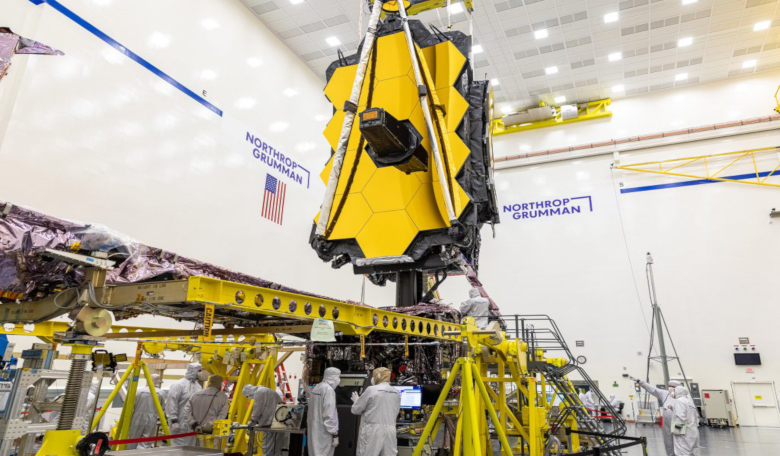Following its successful launch on 25 December, and the completion of two mid-course correction manoeuvres, the JWST mission team have now determined that the observatory should have enough propellant to allow support of science operations in orbit for significantly more than a 10-year science lifetime - this is double the 5 and a half years initial mission lifetime that JWST was expected to complete after launch.
The team’s news comes after an analysis of the telescope’s initial trajectory that shows JWST will need less propellant than originally planned for to put it into its final orbit.
Unlike the Hubble Space Telescope, JWST will not orbit around the Earth, but instead will orbit the Sun 1.5 million kilometers (1 million miles) away from our planet at a point known as L2.
L2 is short hand for the second Lagrange point; one of five so-called areas where gravity from the sun and Earth balance the orbital motion of a satellite.
L2 was chosen as the preferred location for JWST as it lets the telescope stay in line with the Earth as it moves around the Sun, whilst also allowing the observatory’s large sunshield to protect the telescope from the light and heat of the Sun and Earth (and Moon).
Along with midcourse correction and insertion into orbit around L2, JWST has enough rocket propellant onboard for three necessary functions during the life of the mission.
These include “station keeping” manoeuvres – small thruster burns to adjust JWST’s orbit; pointing the telescope toward science targets; and momentum management, which maintains JWST’s orientation in space.
The extra propellant gained by the telescope is largely due to the precision of the Arianespace Ariane 5 launch, say the team.
Not only was JWST’s launch trajectory flawless, because the telescope was already in the correct attitude after separation from the Ariane 5 second stage, the solar array was able to deploy earlier than anticipated.
The solar array had been automatically scheduled to deploy 33 minutes after launch, or when JWST reached a certain attitude toward the Sun. However, because the launch trajectory was so accurate, it meant it could be deployed 4 minutes earlier.
Yesterday, JWST also completed another important milestone; the successful deployment and securement of the observatory’s forward and aft Unitized Pallet Structures (UPS).
The UPS supports and carries the five carefully folded sunshield membranes plus the cables, pulleys, and release mechanisms that make up JWST’s sunshield.
The overall process took several hours for each because of the dozens of additional steps required, including closely monitoring structural temperatures, manoeuvring the observatory with respect to the sun to provide optimal temperatures, turning on heaters to warm key components, activating release mechanisms, and configuring electronics and software.
Their deployment begins what will be at least five more days of necessary steps to deploy the sunshield – a process that if doesn’t go to plan, could spell doom for the mission.
This is because in addition to providing a cold environment to allow its instruments to function correctly, the sunshield also provides a thermally stable environment. This is essential to maintaining proper alignment of the primary mirror segments as the telescope changes its orientation to the Sun.
As the deployment of the sunshield will be one of the most challenging spacecraft deployments NASA has ever attempted, the planned timeline is adaptable say the team, so that the schedule and even sequence of the next steps could change in the coming days.
The steps as scheduled at present can be viewed here.











